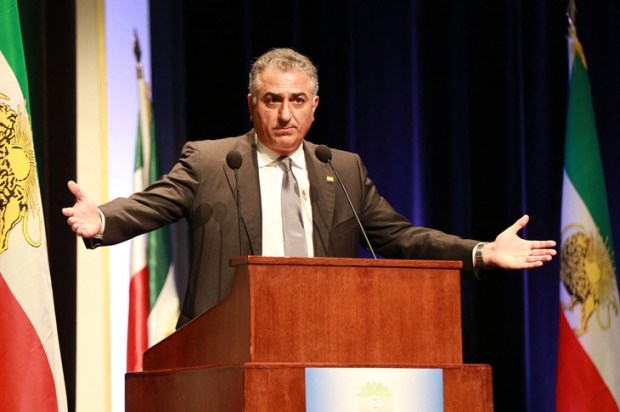The Voice to Parliament referendum went down in flames. Starting with a staggering 76 per cent approval on binary polling, the cash-flushed ‘Yes’ campaign met a humiliating defeat.
Many may be eager to blame the government’s lack of detail, but I believe it is foolish to attribute massive political swings to technical details alone. The results of this referendum challenge the increasingly vocal narrative pushed by many that Australian voters prefer leftist policies and that the Liberal Party must ‘modernise’ by leaning leftward to succeed in the future.
Those advocating for a leftward shift within the Liberal Party frequently attribute recent electoral setbacks to conservative politicians. They back this claim by citing support for traditionally left-associated policies, such as legal abortion and gay marriage, as signals of an electorate veering left. Similarly, they describe young voters as a staunchly left-wing demographic that will not shift right with age as previous generations did.
Happily, despite being believed by otherwise intelligent people, these claims are false.
Advocates of so-called ‘modernisation’ present a seemingly compelling argument: young voters are inherently more left-wing. Unlike previous generations, Millennials and Zoomers aren’t shifting rightwards with age. As older conservatives fade from the electoral landscape and these young progressives become the dominant voting bloc, the Liberal Party will become unelectable without swiftly adopting a socially left-wing agenda. It’s a narrative of inevitability, of a ticking clock, and of a need for urgent change.
Yet, while seductive in its simplicity, this premise is riddled with flaws.
In light of the referendum results, moderates must grapple with the significant polling swing against the voice among voters under 35 years old – a swing achieved by a conservative campaign run by a conservative advocacy group and promoted primarily by conservative politicians. This demographic, initially the staunchest supporters of the Voice to Parliament, saw their enthusiasm wane from around 77 per cent when the referendum was first announced to about an even split when election day rolled around. These results shake left-wing Liberals’ assertion that young voters cannot be persuaded.
Looking beyond our shores offers further evidence. Across Europe, many countries are seeing a discernible rightward shift among Millennials and Gen Z. In Italy and Finland, for instance, youth voters have propelled once-minor right-wing parties into significant contenders, challenging the established political landscape. Far from European shores in Argentina, a pro-life libertarian criticised for being too right-wing by the CATO Institute called Javier Milei is set to become President. Notably, Milei’s most robust support comes from young voters.
The USA is seeing a similar trend among its youth. Millennials, who overwhelmingly backed Obama in 2012, have begun voting for Republicans in large numbers. Recent data also suggest that Hispanic and Black voters, traditionally staunch Democratic supporters, are also shifting right. Notably, this exodus among the left’s most resolute support base is occurring under the reign of Donald Trump and not when moderate figures like Mitt Romney and John McCain led the Republican Party. This is an awkward fact for those ‘modernisation’ advocates.
Such trends put a lie to the idea that youth and minority demographics are only reachable through the espousal of far-left rhetoric.
Advocates for moderation often employ a narrow view when gauging the electorate’s leanings, highlighting the rise in support for gay marriage, abortion, and climate regulations as evidence of a leftward shift. Yet, to claim this is indicative of the inviability of conservative policies is myopic and misleading.
The modern conservative movement has been fairly hands-off on the topic of homosexuality for some time. A good example of the contemporary conservative perspective on the issue is Tony Abbott, who says it’s ‘okay to be gay’ despite rightly opposing same-sex marriage. As for abortion, lamentably, many conservative voters do support a ‘safe, legal and rare’ approach, though polls show that support for late-term abortion is nearly non-existent. Lastly, support for so-called ‘climate action’ has strong support in the abstract, though it collapses as soon as respondents are asked if they’d be willing to pay higher energy or petrol costs to achieve it.
This is to say that the data points cited by left-wing Liberals as proof of the need for moderation crumble under minimum scrutiny.
As the Liberal Party attempts to rebuild, it must decide if it stands by its foundational principles or if the changing winds of political expediency will sway it. It is one thing to adapt tactically to modern landscapes and another to throw out everything you believe in to try and appeal to more voters.
Voters are astute. They can sense when a Party constantly shifts its stance to appeal to them, especially when it contradicts previously held beliefs. This kind of political manoeuvring is seen as inauthentic and downright repulsive. It paints a picture of a gaggle of politicians willing to adopt any policy, not out of conviction, but merely to gain power. Such a perception is electorally toxic – and rightly so.
The ‘No’ campaign did everything moderates claimed would lead to inevitable electoral defeat. Overt right-wingers made their case by grounding their position on principle, dismissing accusations of bigotry by their opponents, and taking full control of the narrative. This led the ‘No’ campaign to a landslide victory. Contrast this strategy with recent elections, where the Liberals’ policy platforms were purely administrative and economic, and conservative rhetoric – particularly on cultural issues – was avoided like the plague. No such landslide victory can be attributed to this electoral strategy.
The success of the ‘No’ campaign has far more to teach the Liberal Party than it does Labor. Their opponents had piles of cash, institutional support, mainstream media backing, and celebrity endorsements. That didn’t stop the ‘No’ campaign, and they ran away with it. Today’s Liberal Party is petrified of negative media coverage, so they’ve opted for a message of competent managerialism to appeal to voters’ pocketbooks and stay on the media’s good side. How’s that working for them?
Voters are not listless vessels adrift in the political tide. Voters are starving for a genuine political vision and strong leadership. Now, the Liberal Party must choose: will they embrace steadfast, principled leadership or pursue a fleeting, elusive centre? The former was tried in 2013, the latter in 2022. Each strategy’s track record speaks for itself.
Emilio Garcia is a political adviser and founder of Overton Solutions.

























